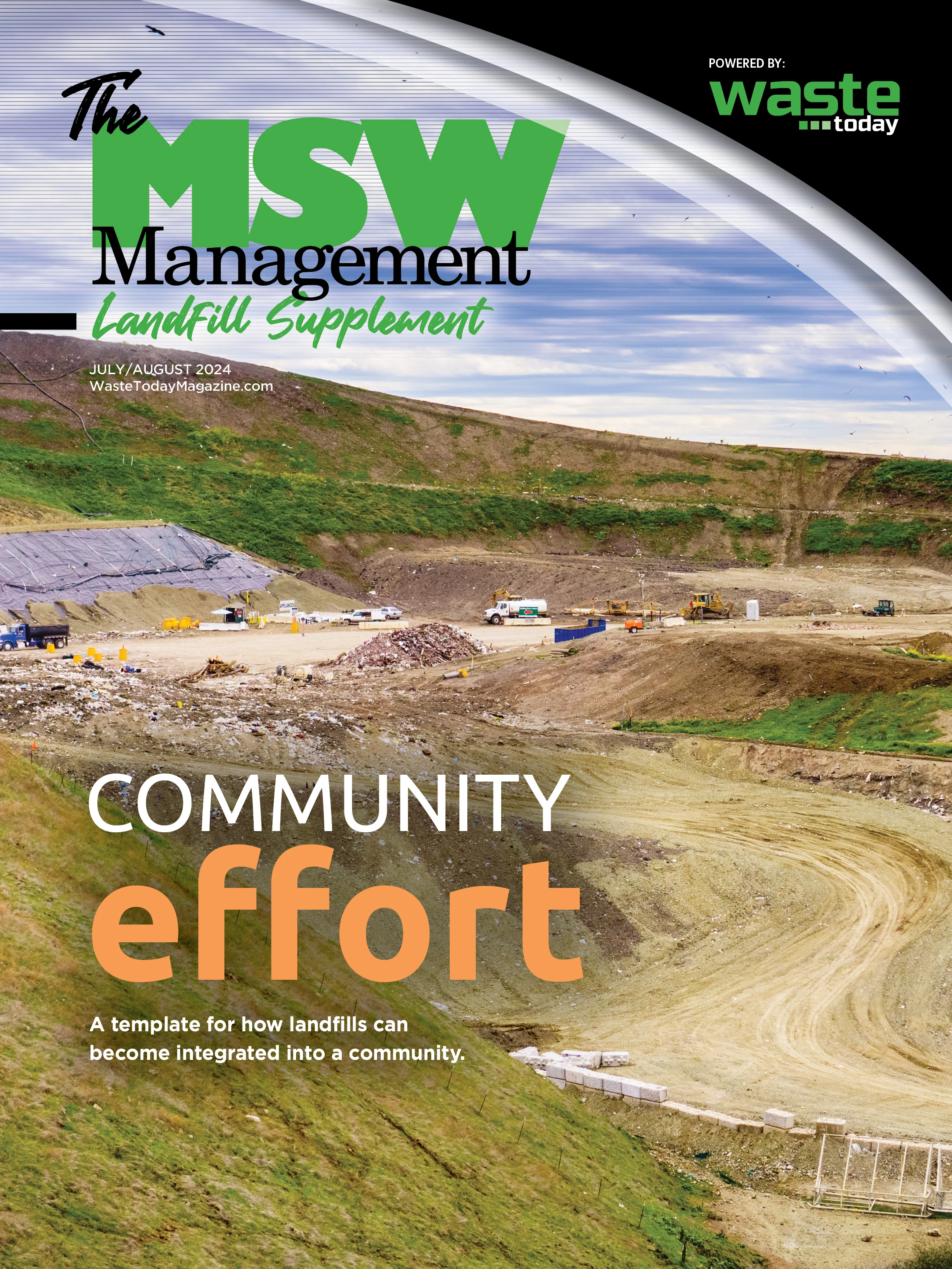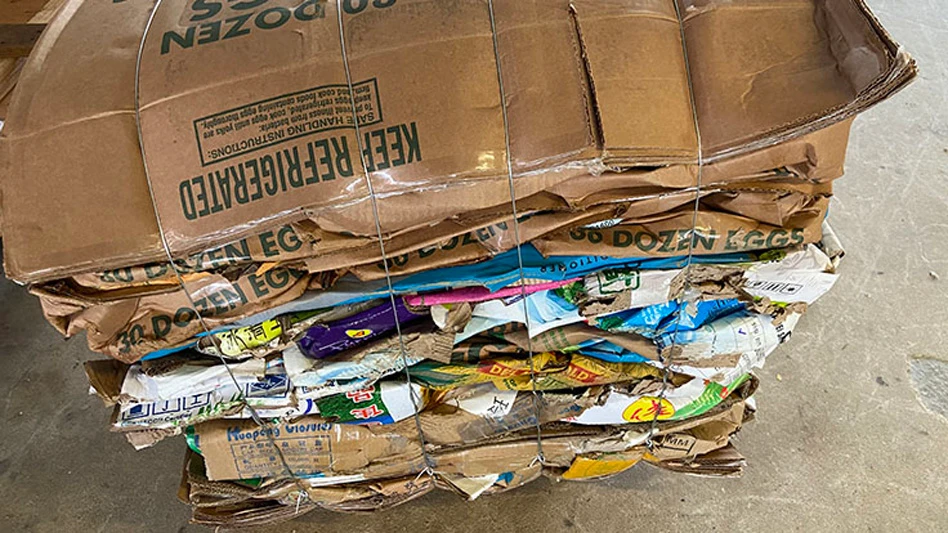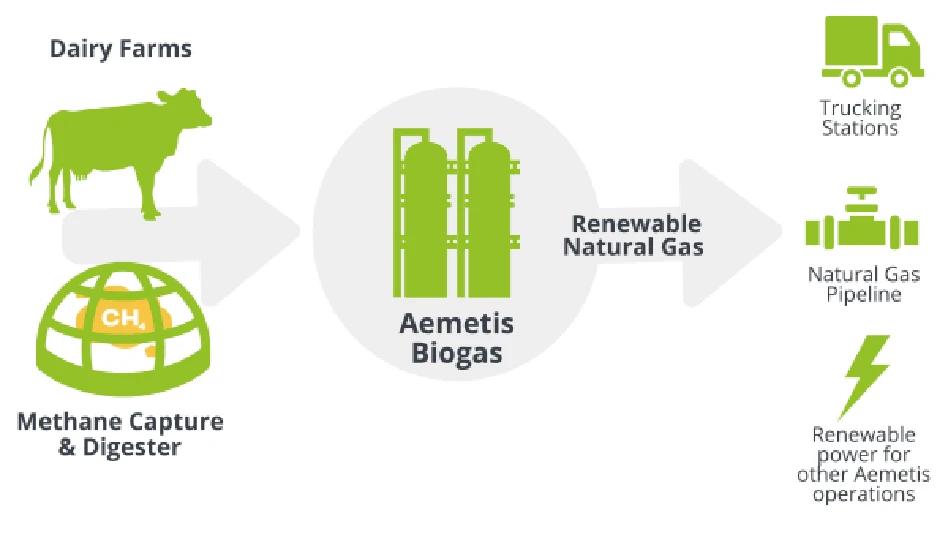
When Nathan Wagle was tasked, as a college senior studying engineering, to design a solution to a real-world problem, he knew right away which problem he wanted to solve.
Over the previous three summers, Wagle had been an intern at a landfill, and one of his tasks was to perform surface emission monitoring, a repetitive process that involves traversing the steep slopes of a landfill equipped with a GPS to measure coordinates, a computer tablet to record data and a monitoring device in a backpack. He would walk a set number of feet, click the tablet to take an air sample reading, then walk another 50 to 75 feet and click again.
“It’s a lot of wasting time, walking around clicking a button,” Wagle says. “I did this job personally, so I know the pitfalls.”
He knew there had to be a better, safer solution to surface emission monitoring, and what he devised was a small robotic rover, resembling a miniature car about 2 feet long by 18 inches wide, that’s capable of following a path along a landfill and taking emissions readings.
The U.S. Environmental Protection Agency (EPA) requires landfills to perform surface emission monitoring, a process that generally involves the use of surface emission monitors to detect and quantify emissions of methane and carbon dioxide, both potent greenhouse gases. The collected data can be used to generate a site-specific emission factor, which is then used to estimate total emissions from the landfill.
The robots, Wagle says, can reduce the occurrence of injuries in the workplace while making emissions monitoring more efficient for employers.
“You add the surface emission monitoring device into that robot, and then you can send it off on its way, and it provides quicker samples, more accurate samples and a lot safer process,” Wagle says. “No twisted ankles, no twisted knees.”After graduation, Wagle joined forces with a local businessman, Don Onken, in his hometown of Easton, Illinois, and together they founded Specialized Robotic Solutions, a company that has patented a robot to make surface emission monitoring on landfills safer, quicker and more accurate.
For navigation, the robot uses an RTK GPS, the same type that waste companies typically use on loaders and heavy equipment at landfills, that is accurate down to the centimeter. The robotic platforms come in tracked and wheeled options, and both can be outfitted with a live-view camera and the landfill operator’s methane monitoring device of choice.
“Anything you can imagine setup-wise, mechanically, we can do, and we manufacture everything in-house right here in eastern Illinois,” Wagle says.
The robots can be controlled via a joystick, and operators can monitor the robot’s progress through a live-view camera on a remote control or a laptop.
The rover has been approved for use in California, and one company in that state is preparing to roll them out for regular use, Wagle says.
While Specialized Robotic Solutions goes through the approval process with the EPA, the company is working with some of the biggest landfill owners in the U.S. to test the robots on landfills nationwide, he says.
The surface emission monitoring robots can be customized based on landfill region. In areas with a warmer, drier climate, such as Texas, a four-wheel-drive version typically will suffice. In northern states that get a lot of snow, a robot that operates on a center-drive track tends to perform better in the icy conditions.
While the solution does involve up-front costs, in the long-term robots can prove to be a worthwhile investment for operators in terms of efficiency and safety, Wagle says. The biggest benefit to using a robot for surface emission monitoring, he says, is increased workplace safety.
“If you’re up there walking on slopes, you know, there’s holes and ruts and rocks and slippery slopes,” Wagle says. “Using the robot, it’s safer. You don’t have to worry about slips, trips, falls. Now, if you send a robot up there, the worst that’s going to happen is you’re going to have to replace a couple parts on a robot. If a person slips and falls and hurts themselves, it’s going to be a week’s worth of worker’s comp.”
For now, humans are still best equipped to perform tasks such as taking well samples, which involves vacuum pressure, as well as data interpretation. However, a robot could cut job time in half, if not more, Wagle says. With a surface emission monitoring robot, he says, “It’s like having two people on the job, but only needing one [employee].”
Looking to the future, Wagle envisions landfill operators using robots to tackle autonomous surveying, autonomous water sampling, carrying heavy loads throughout the landfill site and more.
“You hear about the autonomous cars and stuff like that, but nobody really thinks to scale it back to a more everyday approach,” Wagle says. “Anything, basically, that a human does that you don’t want to do, we are able to … have a solution for that.”

Explore the July/August 2024 Landfill Supplement Issue
Check out more from this issue and find your next story to read.
Latest from Waste Today
- Van Dyk partners with Reckelberg Environmental Technologies
- CRI submits comments to CalRecycle on CRV handling payments
- Reworld acquires EnviroVac Waste Transport
- Waga Energy partners on RNG project at France landfill
- Hawaiian county selects landfill site
- CAA submits final draft program plan in Oregon
- Washington city adds organics collection to waste service
- Aspen Waste Systems expands into Denver-metro market





